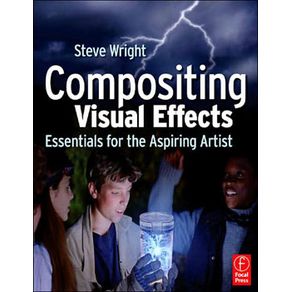Put the essential concepts and techniques of digital compositing to work for you without the need of a single mathematical equation. Compositing Visual Effects is lavishly illustrated with hundreds of film shots, figures, illustrations and diagrams to help the visual reader gain a valuable vocabulary and understanding of the full range of visual effects, in which digital compositing plays a key role. Beginning with an inspirational tour of the scope and magnitude of digital compositing you get a solid overview of the kinds of digital effects routinely executed today. See how CGI (Computer Generated Image) is composited with live action, how set extensions are done, and what a match-move shot is. Following that, you learn each of the key applications of digital compositing, which include bluescreen compositing, bullet time shots, motion tracking, and rotoscoping, and you get a primer on digital images, key concepts, and terms used in the compositing process. The subsequent chapters digdown into each of the major digital compositing applications, introducing the fundamental concepts and processes behind them. This includes the many ways to composite CGI, bluescreen compositing, animation, creating masks, working with digital keyers, and many more; but most importantly, the art of digital compositing making your shots look not just photorealistic, but cool. Learn what is easy and hard, possible and impossible, and what to expect when working on a job that entails digital compositing. There are tips on when not to use the new low-end DV video cameras and tips for the client, such as guidelines on how to shoot a quality bluescreen or greenscreen to get the best results at compositing time. All the while, special attention ispaid to defining new terminology and telling a clear story from the ground up, with the only requirement being that you have read the previous chapters.



